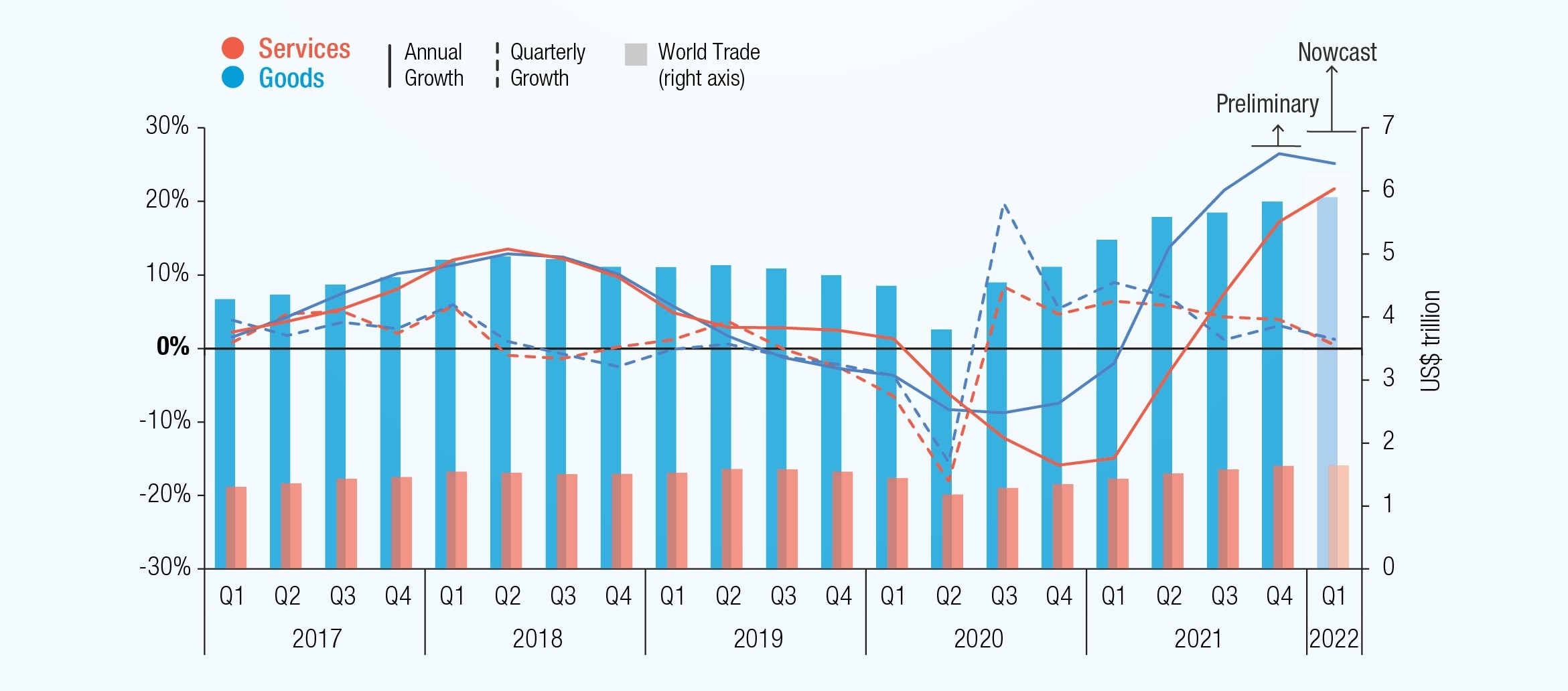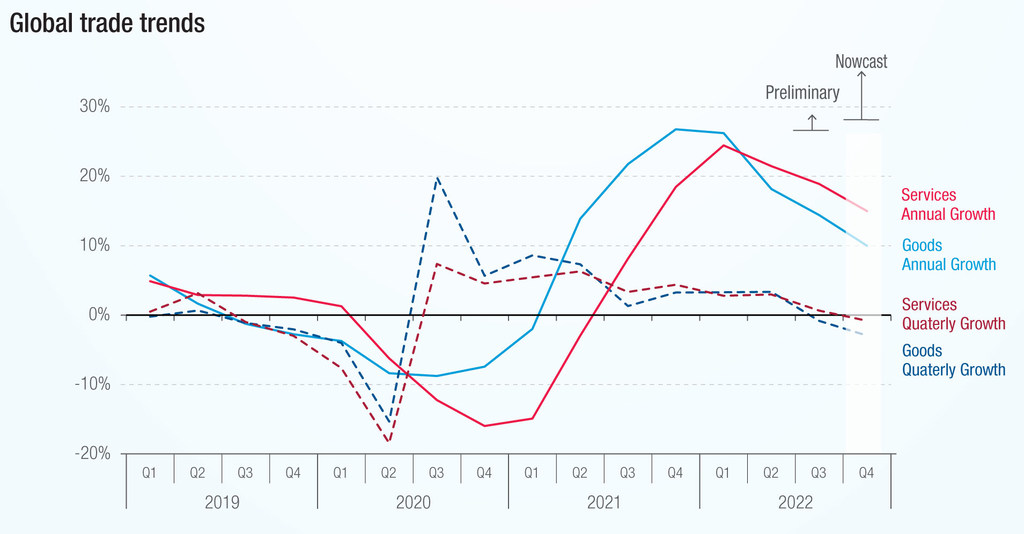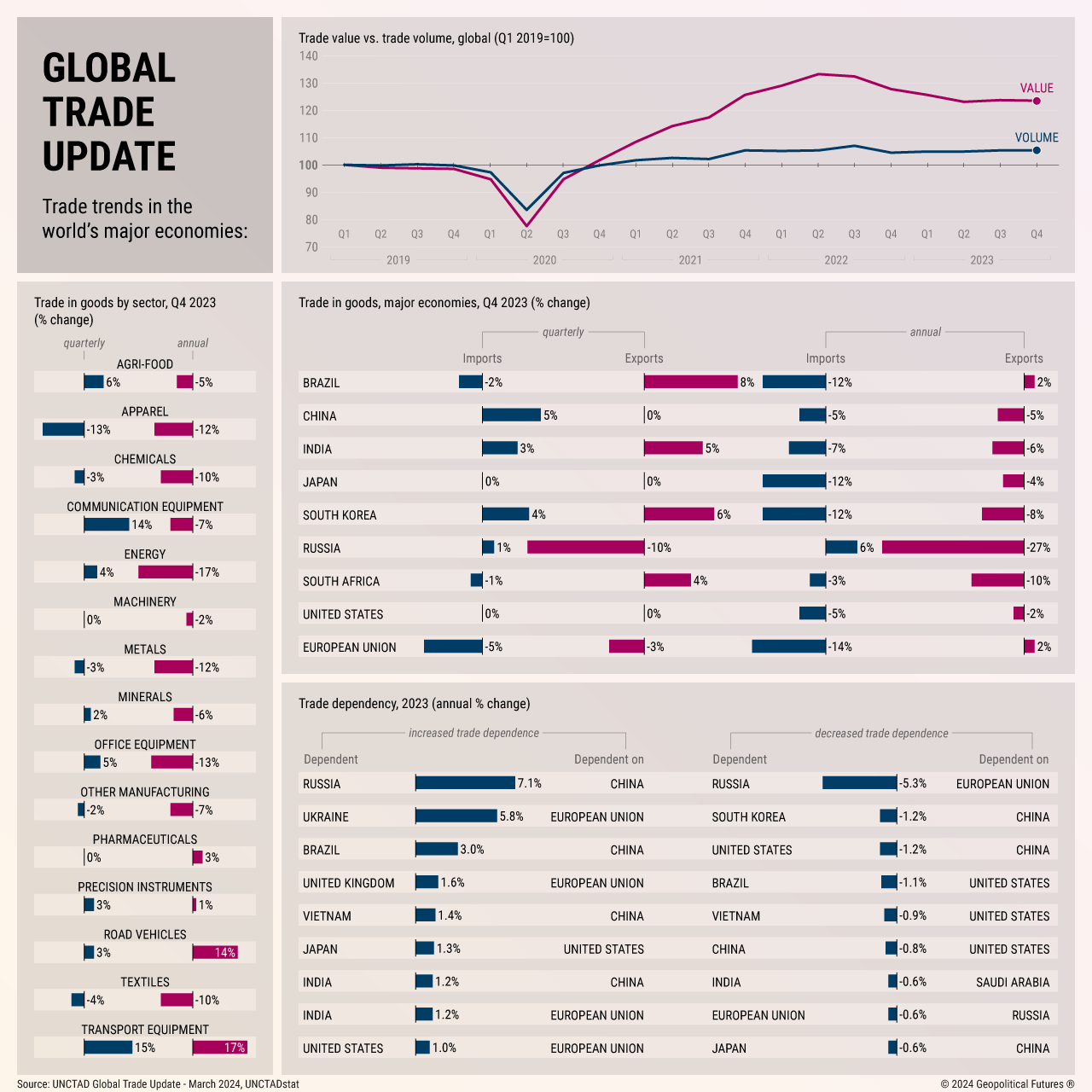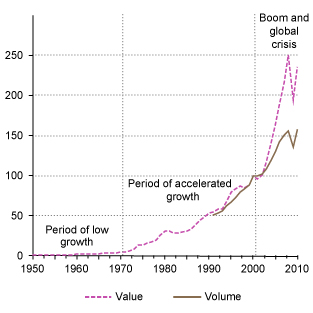International Trade Trends: Insights & Future Predictions
International trade plays a crucial role in global economic development, shaping economies, industries, and businesses worldwide. As trade patterns evolve, understanding emerging trends helps businesses and policymakers adapt to changing market conditions.
This article explores key trends in international trade, how global markets are shifting, and what businesses can do to stay ahead.

1. The Rise of Digital Trade
Digitalization is transforming global trade, making it faster, more efficient, and accessible. E-commerce, cloud computing, and AI-driven logistics enable businesses to expand internationally with minimal barriers.
Key Factors Driving Digital Trade
-
E-commerce Growth: Online platforms allow businesses to reach global customers instantly.
-
Blockchain & Smart Contracts: These enhance transparency and security in cross-border transactions.
-
AI & Automation: AI-driven supply chains optimize logistics and demand forecasting.
Many businesses are leveraging automation tools like DUYTHIN.DIGITAL to streamline digital trade processes, reducing manual workload and improving efficiency.
2. Shift Towards Regional Trade Agreements (RTAs)
In recent years, regional trade agreements have gained prominence as nations seek more stable trade partnerships. Agreements like RCEP (Regional Comprehensive Economic Partnership) and USMCA (United States-Mexico-Canada Agreement) provide tariff reductions and economic benefits to member countries.
Why RTAs Are Growing
-
Protection Against Trade Wars: Nations form alliances to avoid geopolitical tensions.
-
Lower Tariffs & Trade Barriers: Businesses benefit from reduced import/export costs.
-
Enhanced Supply Chain Resilience: Regional cooperation helps reduce supply chain disruptions.

3. Sustainability & Green Trade Policies
Environmental concerns are reshaping global trade policies. Governments are implementing green trade regulations, encouraging businesses to adopt sustainable practices.
Trends in Green Trade
-
Carbon Border Adjustments: Countries like the EU tax imports based on carbon footprint.
-
Sustainable Supply Chains: Businesses adopt eco-friendly logistics and production.
-
Renewable Energy Exports: Growth in solar, wind, and clean energy exports.
Companies investing in green technologies will have a competitive advantage as demand for sustainable products increases.
4. Trade & Geopolitical Tensions
Political conflicts and economic policies directly impact trade flows. Trade wars, tariffs, and sanctions can disrupt global supply chains, forcing businesses to seek alternative markets.
Major Geopolitical Trade Influences
-
US-China Trade War: Continues to reshape technology and manufacturing sectors.
-
Russia-Ukraine Conflict: Affects energy exports and food supply chains.
-
Brexit Impacts: Changing EU-UK trade relationships affect businesses globally.
To mitigate risks, companies are adopting diversified trade strategies and investing in alternative supply sources.
5. The Impact of AI & Automation on Trade
Artificial intelligence is revolutionizing trade operations, from predicting market trends to automating supply chains. Businesses using AI-driven analytics can optimize trade strategies with real-time data insights.
Key AI Trade Applications
-
Predictive Analytics: AI forecasts demand and price fluctuations.
-
Automated Warehousing: Robotics enhance logistics efficiency.
-
Smart Customs Processing: AI speeds up border clearance & documentation.
AI-powered trade automation tools, such as those from DUYTHIN.DIGITAL, are helping businesses reduce costs and increase trade efficiency.

6. Supply Chain Resilience & Nearshoring
The COVID-19 pandemic exposed weaknesses in global supply chains, pushing companies to adopt nearshoring—moving production closer to consumer markets.
Nearshoring Advantages
-
Reduced Dependence on Single Markets: Avoids disruptions from trade restrictions.
-
Faster Delivery Times: Enhances customer satisfaction.
-
Lower Shipping Costs: Saves on logistics expenses.
Regions like Mexico, Eastern Europe, and Southeast Asia are emerging as new manufacturing hubs for businesses relocating production from China.
7. Cross-Border E-Commerce Boom
E-commerce platforms are expanding across borders, enabling small businesses to sell globally with ease. Marketplaces like Amazon, Alibaba, and Shopify facilitate international trade without the need for physical stores.
E-Commerce Trade Trends
-
Rise of Direct-to-Consumer (DTC) Brands.
-
Mobile Shopping Growth in Emerging Markets.
-
Increased Use of Digital Payment Solutions.
Businesses investing in e-commerce automation can scale their operations globally with minimal investment.

8. The Role of Cryptocurrency in International Trade
Cryptocurrencies are changing cross-border payments, providing businesses with faster and lower-cost transactions. Many companies are adopting crypto-based payments for international trade.
Crypto Trade Benefits
-
Lower Transaction Fees than traditional banking.
-
Faster Cross-Border Payments with blockchain.
-
Increased Financial Inclusion in emerging markets.
Despite regulatory challenges, crypto is gaining acceptance in global trade, with major companies integrating Bitcoin and stablecoins for transactions.
FAQs About International Trade Trends
1. What Are the Biggest Challenges in Global Trade Today?
Trade barriers, geopolitical conflicts, supply chain disruptions, and environmental regulations are major challenges.
2. How Can Businesses Adapt to Changing Trade Policies?
By diversifying supply chains, using automation tools, and staying updated on trade regulations.
3. What Role Does AI Play in International Trade?
AI helps businesses predict demand, optimize logistics, and automate trade processes, reducing costs and increasing efficiency.
4. How Can Small Businesses Expand into International Trade?
By leveraging e-commerce platforms, digital marketing, and automation tools to reach global customers without high investment.
5. Is Cryptocurrency the Future of Global Trade?
While crypto adoption is increasing, regulatory challenges and volatility still limit its widespread use in trade.
Conclusion
International trade is evolving rapidly, driven by technology, geopolitics, sustainability, and digital transformation. Businesses must stay informed and adapt to these trends to remain competitive.
By leveraging automation, AI, and e-commerce solutions, companies can navigate global trade challenges and tap into new opportunities. Now is the time to embrace the future of trade!